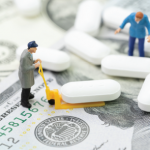High-deductible plans, which require policyholders to pay out of pocket up to a coverage limit for their drugs or other costs of care, seem to be on the rise too. According to a survey by the Henry J. Kaiser Family Foundation in 2016, 29% of covered workers were enrolled in a high-deductible health plan in the U.S., up from 24% the year before.2 Medicare beneficiaries may incur high out-of-pocket costs for biosimilars based on current regulatory manufacturer brand discount program requirements if they are in the coverage gap phase of their Medicare Part D prescription drug benefit and have not entered the catastrophic benefit phase, says Ms. Arquette.
Some patients may try to switch to a biosimilar for possible cost savings, says Ms. Arquette, but “if a patient has been on a drug like infliximab, one of the first biologics, for a long time, and has had active disease that has gone into remission, does the physician want to risk how this patient is doing? Would switching really be that effective?” she says. “You have to consider the total cost of care. If you increase overall medical costs, where are the real savings?”
Some rheumatologists are optimistic about the cost-saving potential for biosimilars, although regulatory problems still need to be worked out. Spiking biologic prices makes the successful acclimation of biosimilars to the marketplace an urgent priority, says Angus B. Worthing, MD, FACP, a rheumatologist at Arthritis and Rheumatism Associates in Washington, D.C., and chair of the ACR’s Government Affairs Committee.
“From 2010, when Congress authorized the FDA to approve biosimilars, to 2016, the price of infliximab (Remicade) increased 70%. The first biosimilar in rheumatology, Inflectra, a biosimilar to Remicade, launched at just a 15% discount to Remicade,” he says. “Similar price hikes prior to patent expiration are common for small-molecule [drugs] before generics compete to drive prices back down. In contrast to generic pricing, biosimilars are not expected to drive prices down quickly. Indeed, at this time of large biologic price hikes and subtle biosimilars discounts, it seems the biosimilar marketplace has cost the U.S. a lot of money, and it will take multiple biosimilars per reference product, or maybe the emergence of interchangeable biosimilars, to compete enough to lower the price significantly.”
Interchangeables are biologic products that are expected to produce the same clinical result as the reference drug in any given patient, according to the FDA. No drug manufacturer has applied for this status yet.



